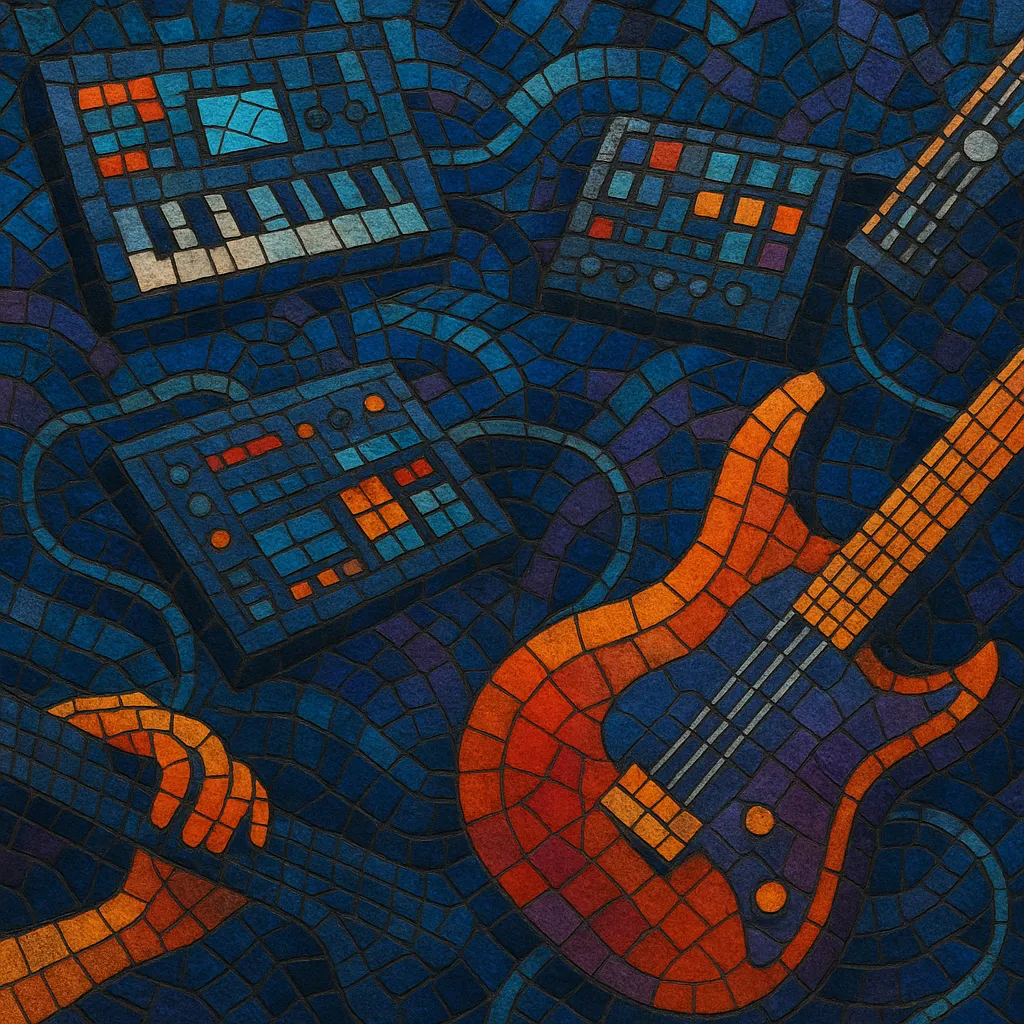Digital fusion is a sleek, studio‑polished branch of jazz fusion that foregrounds digital instruments, MIDI workflows, and precise drum programming. It marries the harmonic richness and instrumental virtuosity of 1970s fusion with the glassy textures of PCM romplers, FM synthesis, and early digital effects.
The style is strongly associated with late‑1980s Japanese fusion/city‑pop sessions and contemporaneous U.S. smooth‑fusion releases, where Yamaha DX7s, Roland D‑50s, Korg M1s, electronic drums, and digital reverbs defined a glossy, high‑fidelity sheen. Tight syncopation, synth‑bass or slapped electric bass, and soaring guitar or synth‑lead solos are central, while arrangements often alternate between slick pop hooks and extended improvisation.
In the 2010s, the aesthetic was rediscovered online: its silky chord vocabulary, neon timbres, and pristine mixes became a sample bed and reference point for future funk, vaporwave, and modern nu‑jazz/indietronica, keeping the ‘digital’ fusion sound in contemporary circulation.
Digital fusion emerged as jazz fusion embraced the new digital studio. The arrival of MIDI (1983) and widely available digital/virtual‑analog gear—most famously the Yamaha DX7, Roland D‑50, and Korg M1—pushed fusion toward brighter, crystalline textures. Drum machines like the LinnDrum and Oberheim DMX, gated snares, and richly chorused guitars became hallmarks.
Japan was a key hotspot: bands and producers tied to city pop and fusion sessions crafted radio‑ready instrumentals with tight funk rhythms and sophisticated jazz harmony. In the U.S., the GRP label’s digitally recorded catalog (Dave Grusin, Lee Ritenour) and groups like the Chick Corea Elektric Band popularized similarly pristine, high‑energy fusion.
As digital studios became the norm, the sound permeated TV themes, commercials, and game music, where nimble grooves and bright synth palettes fit broadcast and corporate contexts. The period cemented a vocabulary of extended chords, slap or synth‑bass hooks, and soaring synth/guitar leads.
Online communities rediscovered these records for their ‘neon‑noir’ nostalgia and immaculate production. Future funk and vaporwave sampled digital fusion’s grooves and harmonies, while nu jazz, indietronica, and J‑pop producers adapted the palette with modern DAW techniques, side‑chain control, and contemporary loudness targets.
Digital fusion’s legacy lies in its union of virtuosity and technology: intricate jazz harmony delivered with pop concision and state‑of‑the‑art sound design. Its fingerprints remain audible in club‑friendly nu‑disco, anime‑influenced dance music, and the smooth, glossy end of modern jazz‑adjacent pop.


